
































































































































































































































































































































































































































































































































































































































































































































































































































































































































































































































































































































































































































































































































































































































































































































































































































































































































































































































































































































































































































































































































































































































































































































“Higher education is fundamental to both national and global contemporary knowledge economies. It is also a driver for social change which crucially includes making higher education available and relevant to a wider section of society…. New tools are required to integrate such developments …Therefore, research leading to the development of such tools is fundamental to the development of modern society. One such tool, whose importance has recently been recognized, is the use of profiles at institutional, regional (geographic, cultural or discipline) and programme levels. Such profiles are a concise, precise and portable description of the particular academic entity Tuning Journal for Higher Education, Issue n. 1 November 2013
Shaping the profile of the architect is an important task that can not only be based upon the views, expectations and conceptions of academics and professionals of architecture but on multiple parameters as these emerge from the social dynamics , the financial dependences , the cultural dimensions and all other factors involved in the materialization of the spaces we experience in our social and cultural life.
Within this scope it is necessary to understand how other social actors who experience and use the architectural creations understand, conceive and expect the profile of the architect to develop in the near future.
As partner of the Archi-Med-es project, EDIW- Education for an Interdependent World accepted the responsibility and the challenge of listening to the voice of different social actors and offering these reflections in order to take into the account this reflection in order to shape the profile of the architect based on the interconnections of perspectives and interactions that characterize our current society.
As stated in the application form of the Project “ This consultation has as main objective to look into the future of the profession from an interdisciplinary perspective. In this respect , this consultation will target at a sample composed by persons belongig to different social groups and different professional categories related to the profession of the architect. It is extremely important to the schools of architecture and professional bodies to understand how the profile of the architect they create or serve is perceived from their broader and complex context “
In order to get to the objective a decision was reached to address the issue from a collective analysis. This was initiated by addressing three main questions:
1. What is the state of affairs of architects in the Mediterranean region?
2. How to represent society?
3. What should be asked to this society?












































































































































In terms of the state of the art a number of studies were analysed and discussed in the two groups which were constituted one dealing with the Western part of the Mediterranean and the other in the Eastern part, both with a number of individuals participating and contributing acting as a network.
The first task for these groups which met in the cities of Madrid and Rome was the situation of young architects in the Mediterranean In both working groups different profiles of architects answered the call to cooperate in the analysis of the process.
The lack of unemployment pointed to a very clear question, what made the Mediterranean architect less employable than in other countries of Europe? In some case there was also evidence that the young architects started to work in other world hubs where their contribution was valued and required. The groups show that the profile needed further analysis and set out to develop this. Sessions were held in each one of the cities along with other focus groups and video chats. They also carried out a second task: to prepare the battery of in depth-interviews as proposed in the Project.
The first and most striking element which appeared and where it was decided to centre the attention was the situation of young architects from the Mediterranean. Data was available particularly about the South of Europe. The level of unemployment appeared as critical. The situation is clear. Young architects do not have opportunities to easily access to a job related to the field that traditionally was that of the architect as a consequence they are travelling all round the world to earn their living in different fields that the profession for which they prepared.
This situation has provoked a massive talent migration from the Medes countries to other European regions ; few of them have travelled to and even established in countries of northern Europe; but an important number of our young architects are working in the middle east or in south America as well.
Sometimes the professional structures in which they can develop their careers have nothing to do with those of their countries, and so they need new knowledge and competences they are not aware of.
Which would be the competences and skills which would make them more prepared to carry out a job for which they express a high level of commitment? How these abilities and skills could, be provided in such a way that the roots were not forgotten? How could the new training be shaped and how this new educational model be implemented without losing the essence of the Mediterranean way of live? Given the quantity of data the case of Spain was particularly reflected upon. Graphs 1 and 2 give important data of the trends taking place.
(Provided by the Union of Architects .Survey dated in 2013 )

A very intense debate between what architects do and what they think as well as what they could do took the first part of the reflections. A methodology of focus groups was initiated which became more important as they continued with the task of defining areas and subareas in which architects could find, opportunities, according to the educational background they have both with creativity and technical Knowledge emerging as the pillars of the university programme.
One month later (April 2015), the Eastern group started working on the same item and the dynamic was very intense. As the starting point five general categories were created for the classification of the abilities and skills frequently demanded and, thus, urgently needed for the architects to access the new professional areas.
Areas where the leadership and communication abilities are expected to be relevant.
Areas where the massive data analysis and decision making process are key abilities.
Areas where the creative productions and design are the principal skills.
Areas where the analysis, diagnosis, strategies and opportunities are crucial.
Areas where the innovation and scientific creativity to produce new ideas are highly demanded.
This starting point gave us the path for the definition of a large chart of profiles divided in areas and subareas in which we looked for relevant people for the interviews. The main purpose was to find architects or any other active professionals that could help us shaping the profile of the architects from the perspective of different scenarios.
As a result of these meetings, a compilation of current data, sourced by different institutions and public surveys was prepared to draw the statistical picture of our young professionals and we also have dive into the remarkable number of different activities architects are working on , developing their new professionals careers.
It became clear that a remarkable part of the young architects still focus the job searching on traditional areas like building design or restoration,interior design and similar opportunities to easily access to a job related to the field that

Project. Expectations of the MEDES countries societies for the architect of the near future
traditionally was that of the architect as a consequence they are travelling all round the world to earn their living in different fields that the profession for which they prepared.
This situation has provoked a massive talent migration from the Medes countries to other European regions ; few of them have travelled to and even established in countries of northern Europe; but an important number of our young architects are working in the middle east or in south America as well.
Sometimes the professional structures in which they can develop their careers have nothing to do with those of their countries, and so they need new knowledge and competences they are not aware of.
A major debate was held by the groups in terms of societal representation. The different fields where an architect could be ask to contribute were collected and analysed reflecting on where the skills that are specific of the architect can take place and also new roads of complementary competences can be developed. Graph 3 shows the social areas that the groups identified as important for the consultation. Graph 4 shows the distribution of the in depth interviews according to the different social sectors. As a result of the brainstorming a large list of areas in which young architects could find a receptive scenario for their creativity and technological knowledge emerged. Not only the traditional areas were considered as serious options but a very interesting range of new areas like cooperation, stenography, administrative strategies and a number of diverse innovative areas in which communication abilities, the creative process or the leadership are the principal skills rather than the traditional drawing abilities.

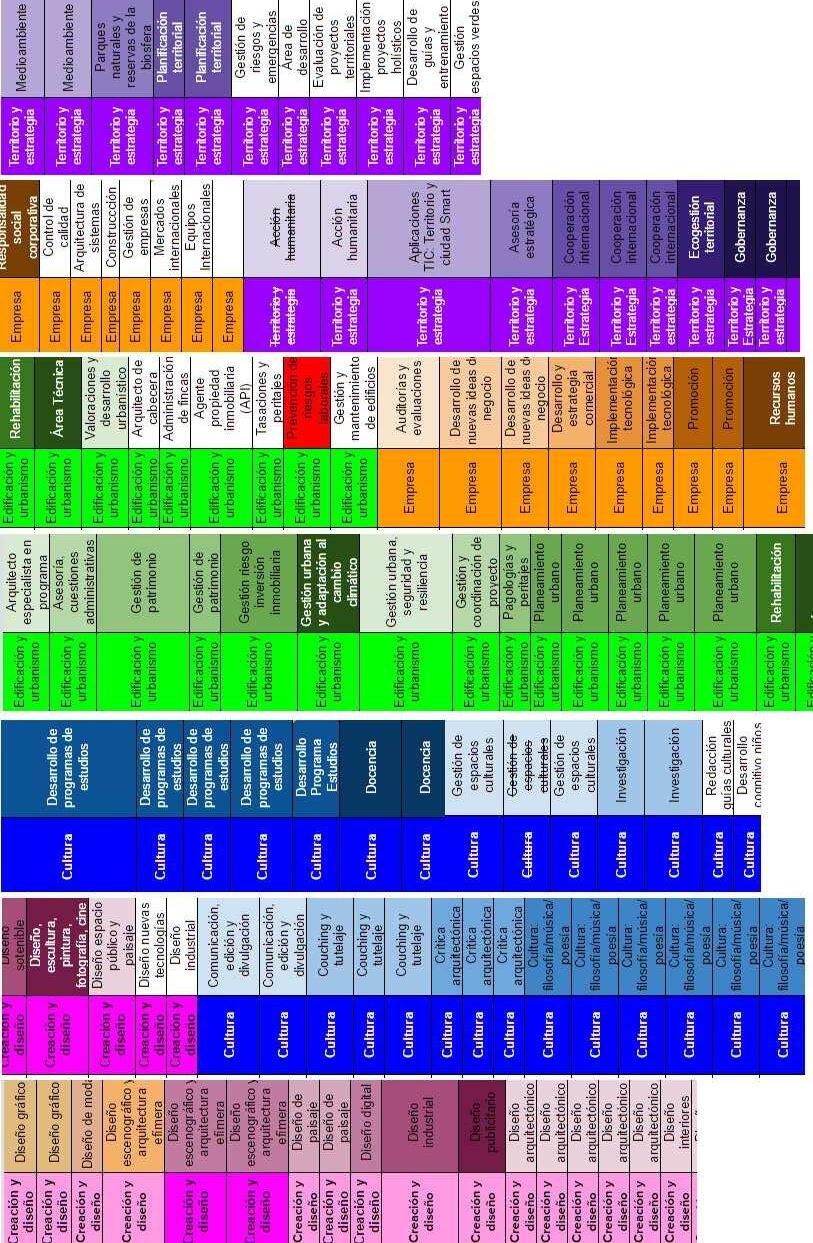
This spectrum gave the groups a very intuitive picture of the sheet on the left where we detailed the interviewers profiles, and consequently we developed the strategy for the interviewers team.
As a result of the brainstorming a large list emerged. This was a list of areas in which young architects could find as a scenario for their creativity and technological knowledge . Not only the traditional areas were considered as serious options but a very interesting range of new areas like cooperation , scenography, administrative strategies and a number of diverse innovative areas in which communication abilities , the creative process or the leadership are the principal skills rather than the traditional drawing abilities.
This spectrum gave us a very intuitive picture of the different sectors of society where we detailed the interviewers profiles, and consequently we developed the strategy for team of interviewers.

As included in the application form both groups began to set up the process for the interviews. Identifying Profiles and defining contents. Once profiles selection was done, we continued with contents and structure definition. After two sessions of the focus groups carried out in Madrid and Rome and several online consultations such as that of the Sociology Department of Deusto University , which was in the origin of the successful Tuning Project a few years ago, the groups reached the following conclusions, translated to methodological recommendations for the interviewers :
In-depth interview process always involves a communication, in the course of which, both the interviewer and the interviewee can influence each other, both consciously and unconsciously. In developing the interview so influence both personal (cultural, social, etc.) characteristics of the questioner and the respondent. It must be focused on maintaining a fluent conversation, for which the interviewer must take into account some aspects such as those described below:
- Briefly explain the purpose and motivation of the study. As they will be contacted written before pointing out these aspects, you do not overextend in this point. It can help starting the conversation.
- One into the conversation, try to keep the interview without the presence of third parties. If it is necessary the point of view of two people working together, for example, make it with two different interviews.
- For the interviewee cooperation with the interview it is important for that person to know and understand the purpose of the interview, what the questions are and the reasons for what that conversation has the highest interest for the team and the society. The interviewr must also inform about the approximate time (or interval) for the interview. In doing so we avoid agenda pressures of the interviewee when reaching the final.
- The interview has to be developed under the control and direction of the interviewer, which does not imply rigidity in content or in terms of how to develop the conversation. A very clear knowledge of the interview script is highly recommendable.
- The interviewee can choose the place for the interview, but be sure that it is comfortable and, if possible, without noise for a good recording (background music can bring us significant problems in the subsequent transcription).
- Tape recorder. Be sure it all works properly before starting the conversation. At the beginning we must request permission from the interviewee to record. Emphasize that This is to facilitate dialogue, avoiding continuous notetaking, but the recording will be used only by the person in charge of the interview. After obtaining consent, you can start recording precisely collecting such consent.
- During the interview, keep a balanced relationship between familiarity and professionalism. During the interview you can explain, when necessary , the content of the questions. The interview may take the form of a conversation, but try to collect the opinion of the person interviewed; it is recommended that the interviewer does not extend to give their view or judgments. The interviewer should adopt the style "Interested listener," but should not evaluate the responses received. Keep in mind that this is not only about collecting data but about receiving their subjective, emotional opinions …
- The interview script is usually well organized in terms of the topics. However the conversation gets its one pace and order , since the person interviewed introduces issues that perhaps in our script is addressed in other moment.
It's okay , in this case, telling the interviewee we want to talk about it later, or letting it flows , and then come back to the issues we had in the script. There is no problem so if we want to deepen some specific aspect or we want to clarify an idea that seems contradictory . We can even include new questions that allow us to clarify or deepen a central aspect for the study.
- In fact for these reasons, and especially as we approach the end of the interview, we may also ask the interviewee for a moment to review our script and confirm that we have addressed all the important issues. We can also finish asking them if they would be willing to clarify afterwards any doubts or questions that could arise with the transcript of the interview.
- Therefore, it would be perfect that the transcription are finished as son as possible after the meeting. The transcription would be as faithful as possible to the conversation (it is not easy to pass an oral conversation to paper, but it would be good to try to reflect as much as possible how it has developed the conversation in terms of expressions, silences ... This is important especially facing the final report, if you want to collect testimonies that illustrate what the team conclusions.
- Following the completion of transcriptions, a first analysis of the main blocks of the interview is possible. For this purpose the focus group will set the key points and methodology .
Include in transcription physical data elements (date, place, conditions) as well as contextualization (interviewee, situation) and convenient enrichment for a better interpretation of the information . Do not forget to collect all these data as soon as possible (without waiting to carry out transcription).
Timing is not the most important thing when facing the interviewee, because it will depend on each person. It is not essential if hat it lasts 30 minutes or 50. However, it is understood that 30 minutes is usually time enough for the conversation. What really matters is being able to take full advantage of the field information each interviewee can give us.
Taking into account this idea and trying not to make it rigid but more fluent, the focus group designed a time and content structure to help the interviewers during the conversation.
PART 1 WHO 5 min.
Brief profile of the interviewee, This is an information to be given by the interviewer to the team once the conversation it´s been transcribed and analyzed ; should be well structured and easy to access. . In this very beginning of the interview we try to break the ice and, to this end, we address more general issues that allow us to landing.
Minimum content.
Complete name. Age. Place of interview. Country. Region Autonomous Community. Training. Work experience (years and relevant fields). Any other relevant data useful in posterior analysis.
PART 2 FROM WHERE ( Interviewee perspective ) 10min.
Information from the perspective of interviewees . This is information should be readily analyzable across the 100 interviews since it will allow us to get a comprehensive idea of the current situation of architects seen through the eyes of respondents, chosen for their ability to help us in this study. We must be very careful because this part is the basis for good analysis. The difficulty is that being an interview rather than a questionnaire, it will not consist of getting answers
to a battery of questions but seeking a minimum waypoints in that conversation to analyze this answers along with those received from as many different profiles as we can.
The overall tone of the conversation and the ability to conduct this block can help to create the right climate for that person to feel comfortable and so, to give us his more sincere opinions.
The interviewes express their opinion and then the interviewer should reread the interview and try to extract from there, the answers to the main questions , and whose content will be at least this:
Minimum content.
Actual society. What burning issues and emerging realities are considered more relevant by the respondent. Changes detected in the environment of society that influence the professional model of architects.
Definition of an architect and his role in society. Are architects adapted to the current society?
Current profiles of architects in their work environment.
Relevant Functions Non specific of architects but usually performed by architects in the interviewee's environment Training lacks or any other type of deficiencies of architects.
To identify key areas, profiles and competencies that architects will need in the years ahead . This is the longest block. The information will be very important to meet the Project objective of outlining the areas and skills necessary in the medium and long term to make it easier for young architects to access the new labour markets.
Minimum content.
Emerging Society . What are the most relevant changes in the near future society ? How does the interviewee foresee the role of the architect in that society?
Opportunities from their professional perspective , seen as possible realities for young architects and professionals who want to redirect their careers in that scenario.
What competences would the interviewee rate to select an architect ?
Which abilities and skills does the interviewee consider important to achieve these competences.
In the opposite sense , which competences or abilities are an impediment or no longer needed? From the University are they addressing these educational needs?
Specialization and professional practices. There are different models for accessing the labour market. In the near future , and thinking on those new areas, does the interviewee consider that specialization via master is the only way to access new areas ? What other possibilities does the interviewee foresee?
Open markets.
The access to international markets for young architects is a persistent reality. Should we be concerned about facilitating the implementation of the architect in other countries? What tools / means can help this implementation?
Once the interview is completed , and before leaving , is important to review the list of minimum contents; if anything relevant is left , the interviewer could ask the interviewee to complete it by mail .
When preparing the proposal for the application form the interdependency was a strong value to be included in the researching perspective of this Project ; but we focused just in the qualitative information coming from the wide range of different profiles of professionals no matter architects or not , with criteria enough to give us something useful to think on.
Once on the road we thought it will be useful to have quantitative information of the different issues we were researching just to see if we were accurate in our proposals or not.
We thought a questionnaire could help in finding the contrast between what we teach in our schools and what we need; so we thought on launching , a 80 questions survey to have statistical data of questions related to the contents of our educational programmes or the internationalisation process and the needs fo communication abilities and leadership. We prepared a questionnaire aimed to the architectural community divided in four profiles:
Students
Professional with a degree in architecture
Professional with Master
Professional with PHD
For this part of the research we asked the Professional bodies of Architects as well as the Dean´s Conference to help us disseminating the questionnaire.
Each one of the four different brands of the questionnaire has its own itinerary of thematic questions as well as a battery of general common questions in order to prepare the answers’ sheet to be analyzed by groups. Important items such as motivation at the moment they are choosing architecture or theoretical and practical contents in the educational programmes are clearly asked to have a real radiography of the number of future and Young architects out there. Along with these opinions it was necessary to know which skills and abilities do the students and teachers perceive as very important and so must be implemented in the educational programmes to prepare the architects for the new scenarios.
With the contrast information provided by the questionnaire we aimed to produce specific data on the subjects which was included incorporating the minimum content of the thematic blocks of the interviews.
In doing this we had a number of thematic sheets with both quantitative and qualitative information about key issues like professional practices, legal/professional framework, digital competences, leadership, communication abilities and a other important skills and abilities to be implemented in the educational programmes and in the professional structures providing the future architects an easier access to professional career.
A complete questionnaire of 20 questions and 4 different profiles ( 80 questions) was finished in and was available in English, Spanish and Italian . Different professional bodies of Architects have committed to help in the communication of this questionnaire as well as other institutions and students associations.
The Western group completed more than 61 interviews consisting of a wide range of different profiles and situations. All were transcribed .The majority of the interviewees are from the Western part of the Mediterranean in every group there are a number of interviewees people but young professionals and teachers working around the world as a consequence of the brain drain we suffer since 2007 when the effects of the financial crisis were evident..
The Eastern group completed a valuable set of 42 interviews and transcribed. In this case the profiles have been enriched by the possibility of having interviews with Asiatic and African professionals. This gave us a very interesting contrast between the perception and the role of the architects in different locations of the Mediterranean area.
As mentioned before, trying to give the results of our study higher quality , we thought that the analysis should link both the quantitative and qualitative origin of the data we have obtained to produce a more consistent forecast of what we have to do in the near future to prepare the young architects to easily access to a professional career.
So the structure of the analysis combined both data. A battery of key issues emerging from the pilot interviews , such us professional practices, communication abilities, leadership, professional models, specializations, duration of the studies and other similar subjects were included in the questionnaire so that we had contrast.
The work continued and intensified further to the discussion on all the details of the methodology, the consultation with the team methodological experts and the carrying out of the largest bulk of the interviews in some of the countries of the Mediterranean area
The selection of representatives from the different areas as seen in the graph has been respected tending to reach equilibrium for social representation. A large group of people have taken part in the development of the definitions of societal representation and preparation of the tools and materials for the consultation. According to the plan, the final debate on the analysis of the results was carried out in November 2016. In the international working group of Archimedes- EDIW which was composed of 37 people, the number of professionals is complemented by university students, young professionals, young unemployed and representatives of other walks of life of society, the summer means different things to each of these components. In this respect, it was important to keep the major intense time of discussion in the autumn. This was needed to have the richness of the group maintained and further to this initial analysis and some of the remaining sampling and validating interviews were done, the mayor analysis counted on a critical moment for discussion which took place, ending on a session on the 12th of November 2016.
At this stage, it was important to carry out a pilot analysis focused on the findings related to twelve in-depth interviews which belong to the section related to the non-architects (a proportionate part as planned in the survey). Out of this section, these twelve were selected, there are 6 males and 6 females from two Mediterranean regions for better comparison and given the timing of how interviews were planned. None of the interviewees is an architect, though a few of them have close contact with the world of architecture both at the
professional or the educational level. This was intended to give specificity to their words and vision. The fields from where they come were the following:
Fashion Design
Entrepreneurship
Photography
Political Sciences
Sociology
Bank - & Business development
Construction Company
Psychology
Anthropology
Policy making
Civil Servant (Mayor)
Political Science | Labor Union
Rita Cedrini. Anthropologist. Professor at the School of architecture of Palermo.
Silvana Roseto. Politic Sciences. Secretary of UIL at Rome.
M.ª Rita Valli. Politic Sciences. Journalist. Rome. Italy.
Carla Salvatierra. Researcher (Roman History). Bolonia Programme’s precursor. Italy.
Luigi Ammatura. Mayor of Pozzallo. Italy.
Javier Elzo. Emeritus Professor ( Universityof Deusto) .Social Researcher. Spain.
Nicolás Ost. Psychologist. Social Educator.Spain.
Asenet Sosa. Sociology and politic sciences. PHD Urban Planning at University of Valencia.Spain.
Luis Gaspar. Philosophy . Photographer and actor. Spain.
Juan Santiago Zuloaga. CEO of Construction company. Bilbao. Spain.
Young Female Business Management. MBA . Project Manager . Madrid. Spain. ( no further information because of privacy reasons).
Young Male Business Management. MBA. I+D Bank . Madrid. Spain. ( no further information because of privacy reasons).
The results of this pilot analysis was planned to set up the methodological elements and structure to carry out the focus groups analysis for the central analysis in order to be able to understand and portray the expectations of society at large and how qualified groups in this society see and foresee the role and contribution of architects to social innovation and development. This was also analyzed side by side with the views of other social representative and, of course of architects, who have been also selected to represent the different specialties in architecture and the different fields where they are performing their profession.
The structure of the analysis is based upon three key issues, and as mentioned in the beginning. This relates to the present perception of the Architect, the vision of the future architect and road toward this future.
As mentioned before, a sample of the results gathered in the interviews was requested from young professionals and students. If we take a look at the answers given by students these are not too far from the rest of the other respondents whether architects or not.
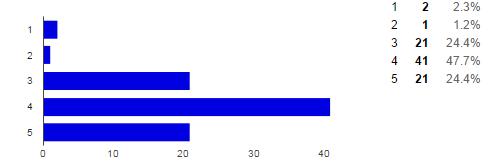

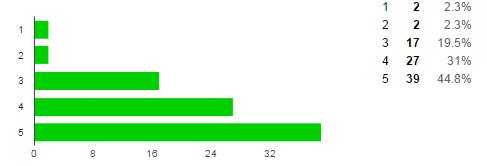
To prevent contamination, direct interviews and the surveys were used as different sources in gathering the data reinforcing the high convergence in the responses from both the questionnaires and the interviews on the skills and competences for the architects of the near future.
Once a few interviews were transcripted and the principal ideas highlighted we asked young architects to evaluate from 1 ( least) to 5 ( highest) which of the following characteristics they consider can help in building the profile of the architects in the near future
Management abilities.
Teamworkig
Digital Competences.
Professional Practices.
Specialization.
Financial Knowledge.
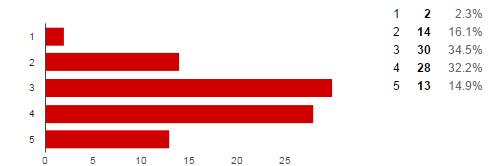
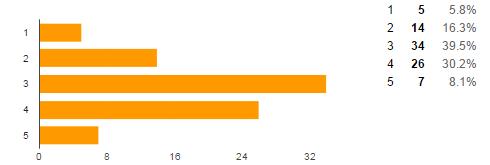
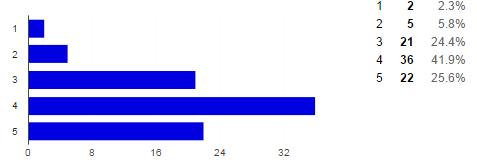
Legal Knowledge.
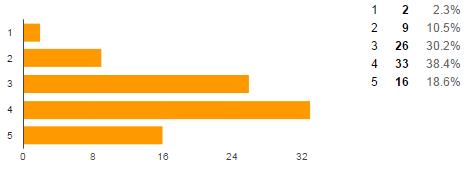
Computer´s knowledge.
Communication Abilities.
Leadership.
Languages
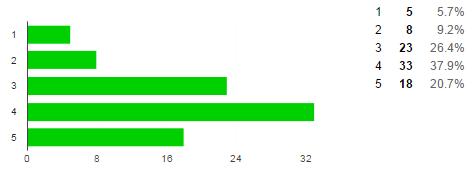

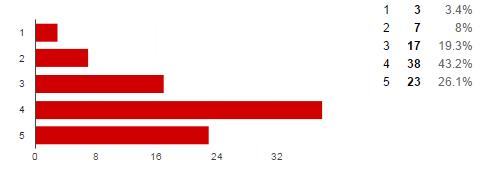
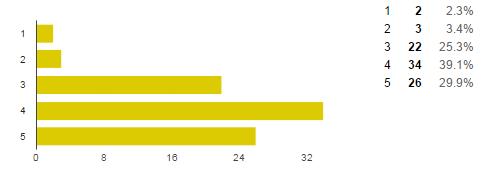
Do contens of educational program fit professional needs?

From 1 ( not at all) to 5 ( yes, perfectly)
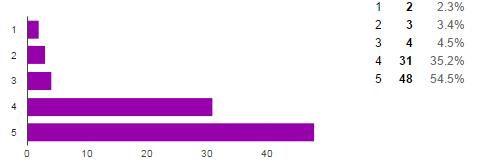
INTERVIEWS CARRIED OUT BY THE ARCHIMEDES GROUP WITHIN THE MEDES AREA
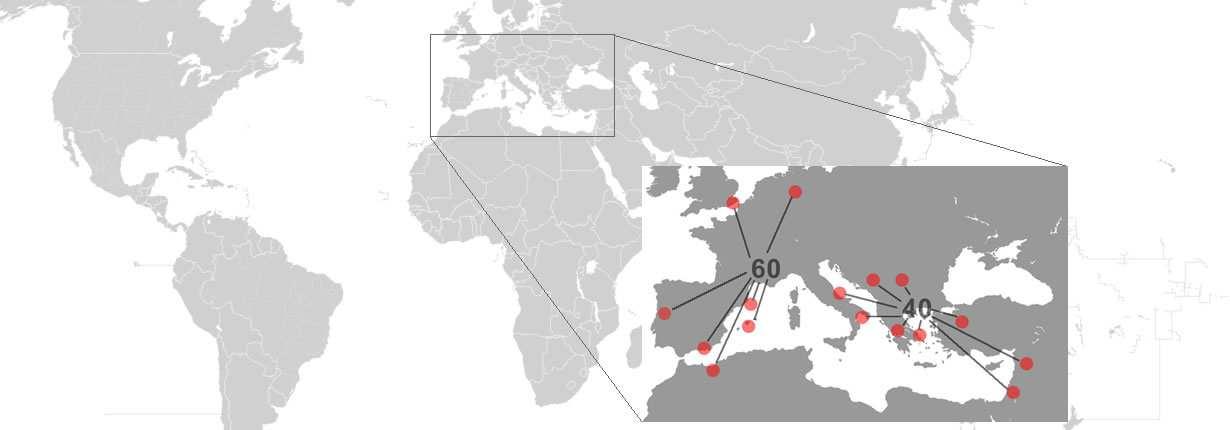
The list of interviewees including professional field.
ACASUSO MATXALEN DEAN OF PROFESSIONAL BODY OF ARCHITECTS ( BASQUE COUNTRY)
ADIB MOHAMED UNIVERSITY MOHAMMED I
AGNETIS IRENE ARCHITECT
AHMED ELGOHARY (E-JUST) UNIVERSITY.
ALCALÁ FRANCISCO ARCHITECT - RETAILING
ALONSO Mª MAR ENVIRONMENTAL MANAGEMENT
AMATUNA LUIGI LABOR UNION
ARACIL PEPE ONG CONSULTANT
ARESO IBON MAYOR OF BILBAO
ARURI NATASHA URBAN PLANNING
ASUA JON LAND PLANNING EXPERT AT URDAIBAI BIOSPHERE RESERVE
BARINA MATTIA ECONOMY
BIANCHIMANO AMADEO CALIBRATION PROFESSOR AT UNIVERSITY
BOANO CAMILLO URBAN LAB UNIVERSITY COLLEGE LONDON
BOUALI ADERRAHIME MOHAMMED I UNIVERSITY
CEDRINI RITA ANTROPOLOGY
CHILLIDA MARÍA RETAILING & INTERIORISM
CIVIT ALBERT GENERAL MANAGER AT CATALONIAN LAND INSTITUTE
COCO CARMELO SOCIOLOGY
COLOMA CARLOS MANAGEMENT CONSULTANCY
DIAZ MARIA STUDENT
DORRONSORO GUILLERMO DEAN OF DEUSTO UNIVERSITY
EGEA LUCIA BUSINESS SCHOOL DIRECTOR
EIZAGUIRRE ALMUDENA PROFESSOR AT UNIVERSITY MARKETING
ELZO JAVIER SOCIOLOGY
ERENEA JUSTINE ALLISON ARCHITECT
ESCORIHUELA Mª JOSE WATER RESOURCES SENIOR RESEARCH SCIENTIST
FERNANDEZ MAITA UN HABITAT
FERRANDO JUAN ARCHEOLOGY
FONSECA MARTA COLLECTIU PUNT 6 / GENDER PERSPECTIVE
FONT PEDRO PROFESSOR AT UNIVERSITY UCL BARTLET
GARCIA MOLINA RICARDO PARTICIPATIVE DESIGN / HOUSING
GARCIA. CARLOS LAWYER
GASPAR LUIS PHOTOGRAPHY
GIGLIA LILLO ARCHITECT
GJINI KRISTINA ARCHITECTURE & URBAN PLANNING
GOMÁ JAUME INDUSTRIAL ENGINEER / STRUCTURES
GÓMEZ RAFAEL LAWYER URBANN PLANNING
GOZALVO. Mª JESUS TOWN HALL ARCHITECT
GRASSO RODOLFO ARCHITECT
HAASBROEK PETER FINNACIAL MANAGER
HAKKY RAFEE ARCHITECTURAL ENGINEERING . UNIVERSITY.
HARRIDSON MARTA HEAD OFLOGISTICS DEPARTMENT AT MIRALLES GROUP
JAUREGUIBEITIA GORKA PROJECT MANAGER
JIMENEZ MARTILDE ARCHITECT - SOCIAL MOVILIZATION
KANJARAWI RASHA URBAN DEVELOPMENT
LIOTTA SALVATOR JOHN ARCHITECTURE & DESIGN
LLOPIS CARLOS PROJECT SUPERVISOR
LUCENTE ROBERTA ARCHITECTURAL COMPOSITION
LUDEVIDJORDI PRESIDENT OF COUNCIL OF PROFESSIONAL BODIES OF ARCHITECTS
MARTÍ PABLO PROFESSOR AT UNIVERSITY
MELGAREJO EMMA UNIVERSITY PROFESSOR
MENINGHINI OSCAR ARCHITECT
MICHELE PALEARI ARCHITECT
MURAGLIE LUCIO LABOR UNION
MURTIC AIDA ARCHITECTURE & URBAN PLANNING
NOGUERA PABLO URBAN PLANNING
ORTEU ELENA MANAGEMENT CONSULTANCY
OST NICOLAS THEATRE - ECO CONSTRUCTION
PARRINO GIORGIO URBAN REGENERATION
PATERNO DAMIANA PROFESSOR AT VENICE UNIVERSITY
PERALES RUBEN SCENOGRAPHY
PEREZ IGNASI BIM IMPLEMENTATION AT WITS INSTITUTE
PHOCAS MARIO C. CYPRUS.ASSOCIATE PROFESSOR AT UNIVERSITY
PIE NINOT RICARD DEAN SCHOOL OF ARCHITECTURE
PIRO VICENZO STRATEGY BUSINESS DEVELOPMENT
PONTIJAS MIGUEL ARCHITECT
PUYUELO ANNA PROJECT MANAGEMENT / ART AND ARCHITECTGURE PUBLICATIONS.
QUINTANA BET LANDSCAPE DESIGNER
RAMIREZ GEMA PROFESSOR AT UNIVERSITY
RATTI CARLO ENGINEER
RICART FERNANDO URBAN PLANNING
RODRIGUES ANABELLA WRITER.
RODRIGUEZ ANDREA CULTURAL SPACES MANAGEMENT
ROMERO FELIPE ARCHITECT - ISO 9000/14000 AUDITOR
ROMERO FERNANDO LAW PROFESSOR AT POLYTECHNIC UNIVERSITY IN VALENCIA
ROSETO SILVANA POLITICS
RUBINETTO ESTER STUDENT
SABOUNCHI MARJAN PHD STUDENT. ARCHITECTURE
SALVATERRA CARLA HISTORY
SANCHEZ LOZANO EMILIO COACHING & TEAM BUILDING
SAVAGNONE GIUSEPPE CULTURAL BUSINESS
SCIGLIANO STEFANO MANAGEMENT ENGINEER
SENIOR ECONOIMIST BANK-BUSINESS DEVELOPMENT
SENIOR PM PROJECT MANAGER
SERRANO CARLA ARCHITECT
SILVA DIOGO SOCIAL WORKS STUDENT & YOUTH GROUPS LEADER
SORRENTINO VITALBA COLLEGE PROFESSOR
SOSA ASENET POLITIC SCIENCES
SPIRIDONIDIS CONSTANTIN UNIVERSITY PROFESSOR IN DUBAI
STICCHI MARIA COLLEGE PROFESSOR
TEMES RAFAEL RESEARCHER - URBAN PLANNING
TOLLIN NICOLA SUSTAINABLE DEVELOPMENT
TORREGROSA VICENTE ARCHITEC- REHAB. PATRIMONIAL BUILDINGS
URQUÍA MIGUEL SENIOR EMERGENCY SHELTER COORDINATOR AT UNHCR, VALLI MARIA RITA JOURNALIST
VEGA OSCAR CFO AT AECON / ARCHITECTURE & ENGINEERING CONSULTANCY
VEIGA ALBERTO ARCHITECT FOUNDER OF BAROZZI-VEIGA FIRM
VIDAL MARTÍN ARCHITECT
VILLA PEDRO ENTREPRENEUR - DEVELOPER
VILLANUEVA BU SYSTEMS MANAGEMENT
ZULOAGA SANTI CONSTRUCTION COMPANY OWNER
As starting point we would take the picture sketched from the 103 interviews of the current perception of architects by society.
None disputes the fact that architects are very creative and intuitive professionals with a wide range of humanistic and technical knowledge but lacking visibility in society as well as in soft skills and business abilities.
Beyond these items, our interviewees bring us a valuable image of the architects of the future as they see architects from their different fields of work.
Here we present the final report with inferences from the responses of 100 in-depth interviews as set by the project.
The second-interim report included the results of the first 12 interviews carried out by our work groups.
Here we incorporate the other 91 interviews. Through these, we could check again how geographical or professional differences did not directly affect notable differences in the ideas expressed by the interviewees. There are a great number of common points in the answers that let us set up the profile demanded by society for architects of the near future.
Below are competences and abilities that surfaced from the first interviews.
SOFT SKILLS
DIGITAL COMPETENCES
PROFESSIONAL PRACTICES
SOCIAL IMPACT OF ARCHITECTURE
BUSINESS MANAGEMENT AND LEGAL ISSUES
LANGUAGES
INTERNATIONALIZATION
Now we add some other competences and abilities our interviewees considered as relevant in shaping the profile of architects:
LEADERSHIP
SOCIAL ARCHITECTURE
MANAGEMENT ABILITY; BUSINESS KNOWLEDGE
TRANSVERSALITY
ADAPTATION
SUSTAINABLE DEVELOPMENT
COMMUNICATION ABILITY
FUTURE CITIES & URBAN PLANNING
NEW TECHNOLOIGIES. BIM. REHABILITATION AND RESTORATION. RESEARCH.
The structure of this document is as follows:
First we include a list of the interviewees with their respective field of action. Along with this list we present a map of the location of the interviews in order to show the diversity of geographical procedence of the interviewees.
From the transcriptions, we have extracted those key items our interviewees marked as relevant regarding the Intellectual Outcome O2 “ Expectations of societies in the Medes countries for the architects of the near future
Within the 40 -50 minutes of the interview, our interviewees mentioned a lot of ideas but not all of these were considered suitable for the definition of the architect’s profile. It has been a tedious process of analyzing the responses to isolate the appropriate ideas.
Taking a few ideas from those frequently repeated in the interviews, we can draft the common pattern of what the interviewees perceive as the core expectations for the profile of architect.
CORE IDEAS FOR THE PROFILE OF THE ARCHITECTS OF THE NEAR FUTURE.
To deal with the lack of visibility we cannot leave the architect on i his own once completed the degree. It is crucial that society in general and potential clients of architects as professional services providers, realize they the latter are there as the principal actors of the urban scene and with all the intellectual, technical and cultural preparation that the educational program they have gone through gave them.
In the same way that a doctor is clearly seen as the principal actor in medicine by the patients, or the teacher is at the school, architects must step forward and take the place they deserve and they with the expertise thay are called to contribute. But this step must be based on the confidence on his expertise rather than as a select eliteWe need people to bear in mind that the architect can transform their environment and help them to build their future.
For this purpose we must involve the architect in processes where social impact is highly visible such as in urban rehabilitation, emergency situations where a quick response is needed, public housing projects, urban sustainable design, public spaces, participation processes, etc.
Architects can take the role of communicators and facilitators between citizens and institutions and from this, they can help in building new scenarios. This will require special abilities and in group communication and management, since it is not the same talking to one person or to a group. ( In the end, it has to do with touching reality, perhaps not always in front of cameras, but in negotiating encounters with those in society who can bring about action preferably with the common good in mind,
For this purpose, cooperation with public institutions is crucial since these especially sensitive areas in which architects can intervene are frequently under the responsibility of public administration. Perhaps a coordinated action of both Public Administration and Professional bodies can bring open opportunities to draw an effective strategy for architects to get involved in these areas as key actors. Just imagine a professional practice mandatory period to get a degree on architecture during which students had to work hand in hand with citizens, civil associations, primary and secondary schools, social agents and all the groups translating into projects their ideas addressing challenges involving urban issues and presenting these to public or private institutions that have the competency, public mandate or resources to put them into action.
“...if you really want to address a problem, where society can take a lead in the process of action further public education is needed. I think architecture, on its own, is not enough.”
(Kristina Gjini. Architect)“...I see people now, at least architects, moving towards socially or community- involved architecture.”
( Rasha Kanjarawi . Urban planner)Soft skills are a combination of personal attitudes along with the social approach of the architects to the projecting process. Listening and proximity are two of these soft skills that architects need to incorporate in the background of the professional profile.
A number of our interviewees perceive architects as elitist professionals working at their offices for large private companies or public institutions.
While this is true for a selected few, (since multinational companies and institutions also need architects), we find a legion of young professionals without access to this very exclusive labour market. They have high level of needed technical knowledge and intuition to be able to create and be involved into the daily life of people to bring them creative solutions r in housing, land planning, interior design or landscaping.
For this new scenario, architects will need a different approach in the relationship between society and architecture.
Architecture as such, gives up being the end and becomes a means for society to transform the city and, consequently, submitting itself in changing a few rules as well.
Introducing these soft skills in the profession is not easy since each country has its own idiosyncrasy and differentiated approach will be needed. At the core of all of this participation process and interaction methodology are the ability of listening, thinking and communicating as relevant elements to be incorporated in a systematic manner to training in the profession.. Listening is the first step for the architects to understand what the client (or society at large) is demanding and the reason for this.. Processing the whole information requires hours of collective thinking, taking into account all different opinions (group dynamics) to finally produce in an agreed and consensual manner something useful and easy to communicate to the big public. These are processes which were not envisaged by in the education of the architects.
The educational programme, could consider a kind of bottom-up approach with simulations of urban situations. where students initiate questions and offer possible solutions. Debate is a widely contrasted way for these ways of working in the future. Thus, a good strategy for implementing the soft skills in the profession could be introducing a discussion-based methodology in the schools of architecture rather than the classical style of direct instruction where the instructor takes the central role in the learning process. Even now, it is very frequent during the urban planning process to see different interest groups arguing debating on alternative solutions or diverse understanding of the issue at. These and many other strategies need to be reflected upon and designed as part of the architectural education program.
"I aspire towards a society where architecture can serve to value the spaces of the persons by projecting them into relationships with others so that public space becomes a shared space.”
(Giuseppe Savagnone, Philosopher )In terms of globalization the leading role of internet and social networks is without doubt. But the question is : How can architects take advantage of the digital media to enhance their profession?
Although everyone has a Mac / pc in the office or even a laptop at home, very few of us have taken time to figure out the way architects can access the professional services market for their practice through cyberspace . At school, where almost everything is within access no matter notwithstanding financial or marketing limitations, end products highlighted with shining designs and astonishing projects presentations are the goal. We should encourage our students to be aware of these possibilities to market the profession and to see how they can play with a competitive edge in the social networks. These digital elements perceived as highly important today, however, are barely taught at the schools of architecture.
If we consider an architect also as entrepreneur digital marketing and basic knowledge of e-business would be decisively important in anticipating the continuous changes of the labour market. This will allow young professionals to reach new market niches. Maybe this part of the educational programme could be implemented during the last years or even in an independent post degree period but should be compulsory for active professional architects.
“I think that for the first time in history we have too many resources, a lot of which are technologicalBut we also have to look into amazing human capital and expect from us to be very inventive in the use new things of these resources, moving way forward in the eliciting progress intergenerational human resources can engender.”
( Aida Mutric. International Cooperation and Environment Development)At least four years period of professional practices would let recent graduates gain expertise . It is not easy to acquire the whole practical knowledge in some areas but with a supervised period of professional practices along with a continuous training during these formative years and a final evaluation process of these practices, we will ensure a minimum level of professional competences. This is not new as other professionals have very similar successful programmes. For example, doctors, psychologists, as well as teachers and veterinarians do their practice period before they are allowed to have professional activity on their own.
Perhaps an independent agency halfway between universities and companies or public institutions, could play the role of supervisor in order to ensure quaslity assurance of the academic methodology for the training and evaluation process, and guarantee fair job conditions and real responsibilities of young architects.
“….and maybe by doing more internship, even in the first years, without waiting for last years of the academic program for an internship, one would understand slowly and try to put together the learning process …”
(Kristina Gjini. Architect)Post evaluation of our architecture degree programme is key to fill the gap between what we think as architects with what people feel and think of buildings, public spaces, interiors, and so on, once these become part of the new urban scenes in daily life.
Sometimes architects abandon the project once the work is finished like a closed chapter of their professional life. In doing this, they turn their backs to the ever changing reality of their users. Social networks can help architects so that they have a feedback in real time of how the ideas and designs meet the needs of our society ; the fruit of this giving and receiving process will improve the quality of the architects' work indeed.
Participative processes have changed from the category of mere recommendations to be that of a legal requirement because of European Directives adopted by EU Parliament gave citizens space in the decision making process of urban planning. And for sure they have gained public support since social agents became involved in the future of their immediate environments.
However, a good assessment protocol for the social impact of architecture and urban planning could be highly useful to be sure public funds are used in the correct direction. It is not only that the building or the public space or any other piece of architects’ work meets the legal criteria and technical specifications . In addition, the social approach to assessment protocols would take into account the user´s level of satisfaction of a building or through the an acceptation index and use intensity by citizens themselves.
“...we have architects more engaged in what we call democratic architecture, social architecture, architecture for people. These are small scale interventions that could connect with the community.
(Aida Murtic. International Cooperation and Environment Development)
The architect´s education, has traditionally been based on a wide range of disciplines but in none of them with depth enough to consider the architect a specialist in any specific field. It was oriented to create open profiles which ,with professional experience gave the archtitects the specialization on their field of practice.
This left the practices or apprenticeships out of the academic programme. The challenge ahead is combining the generalistic formation with a professional practice experience . These practices should be evaluated so that keeping the academic rigor at the same time, reliance rely more heavily on an are openmethodology and with continuous feedback from the labor market in which the architecs will be inserted. Before the generalist profile the architects have so far been oriented to , the need for specialization in specific fields and the continuous education or development updates in our society are emerging.
These are not opposing ideas. We should not disregard the good aspects of the formation we have recieved the global, transversal and generalist perspectives of our formation made us adept in adapting to many profesional profiles yet with the need to specialize in a specific field of the profession. These specializations will increase efficiency and queslity in work ad will open opportunities to new clienteles. Besides, the increasing complexity brought about by technology and regulations necessitate the work to be done in multidisciplinary teams, a methodology not much appreciated in Architecture until now
[...]...I believe it is crucial to guide students from the common base towards specialization . From the very beginning they must be aware of the fact that projecting alone could not be their future, but designing, business management or structure engineering "
(Bet Quintana. Architect)“It seems best to give students the cultural instruments first after which will come the specialization."
(Nicola Tollin. Architect)The capacity of an architect´ to lead emerges as one of the greatest need in the field of academic formation . However, It is not about executive or impositive leadership but rather about a knowledge -based leadership integrating and ideas and persons .
The survey group understands that team working with other professionals as indispensable to give collective responses. The generalist formation of an architect in diverse fields his analytic capability and creative capacities give the architect the ability to lead teams and processes in the different áreas of architecture.
When making the technical decisions, the project must provide s means for integrative systems of integration and collective participation processes ( citizens , users, civil associations) creating dynamics of dialogue, data management and analysis as key elements in this process.
Unlike other professionals, the architect is especially equipped to work. in teams, This is one of his “fortes”. Technology and new instruments employed in projects make a multidisciplinary focus indispensable.
In this complex scenario, the architect gives up his individual protagonism to play an active role as consultant in a participative constructive process of building a city acting as a link between politics and citizenry. Not only is it understood that the architect needs to cooperate in multidisciplinary groups but in many occasions, , it is noted that the former has the competences and abilities to lead these teams..
In everyday life the architect, besides his specific functions, assumes the role coordinator and overall manager of the entire process. Hence, architects are able to assume those tasks involving organization and management and labor.
The executive profile of management has changed and thus new leaderships searching for consensus and leads through dialogue are needed,. The architect´s analysis and communication abilities are perfect for these jobs.
They can act as the perfect liaison between society’s decision makers and , consequently , must asume an active and propositive role. Some responses even cite him as a political agent.
“I believe our role is one of consultancy, of technical advice in the participative processes of city construction. It worries me that the real estate crisis we have been through , has brought to the
Expectations of the MEDES countries societies for the architect of the near future
limelight the fact that cities have just been built to sell them rather than to live in them
(Matilde Jiménez. Architect)“ The architect is a person with high analytical skills because of the high complexity of the subjects they study, at the same time, they have the capability of taking accepting other´s ideas , learning from them, and reaching consensus. This is the kind of abilities we need for our executive positions in many organizations. This leadership is the one I prefer.”
(Oscar Vega. Economist)It involves that architects must get out from the isolation of his own creativity to get closer to this changing society, a required profile to understand the current needs.
The architect must move beyond his academic education to accept the contributions of other disciplines as well as of civil society. Non-acceptance of critiques is the worst impediment to be agents of change.
This group considers important to review motivations focusing on a more ethic-based profession committed to the common good.
Architects must be useful to the society and must think of producing building to serve people rather than to leave his own print for the future. They must be on call in emergency situations and voices regarding social issues like housing problems. As professionals, their profiles should be linked to cooperation in human aid projects.
“…architects should be valued more for helping society rather than about thinking in buildings …”
(Peter Haasbroek. Economist)“Current architects must evolve from being pure artists of the past to one taking into account the needs projected for at least five years They must focus on big cities where 70 % of the world´s population will live. with a change of we can manage without much difficulties.”.
“ Architects must try to solve issues involving environmental, lifestyle and social needs by projecting or constructing a neighborhood that accentuates community. From this new role , the architect should give a deep vision of integration.”
(Searche&Drive. Consultancy.)
The key lies on rebuilding a social organization that takes into account the problems of modern neighborhood where the delinquency index is high projecting or constructing a neighborhood through architecture that accentuates community.. From this new role, the architect should give a deep vision of integration.”
(
Maria Rita. Journalist)Architects could be facilitators regarding urban strategies based on citizen´s participation and consensus --close to the people , able to solve small scale issues regarding housing or neighborhood issues.
They must be conscious of the importance of the public spaces due to the lack of private spaces and could take the lead in urban recovery processes acting as social empowering agents acting as activators promoting cultural projects that appropriate the public space.
“ I believe that the architect of the future, should be: a person with a great listening ability , understanding people`s needs; a person able to listen and give other people the relevance they deserve. A person with a very clear vision of the impact of the architecture and the urban design over the social fiber, on the people [...] a person with a global visión, a comprehensive and wholistic visión of the social dynamics an architect should be aware of social dynamics, beyond his technical knowledge."
(Nicolás Ost. Psychologist)
“The architect´s profile is one for progress and another for social profit. he/she should start looking at what is going on throughout the society”
(RicardoGarcía Molina. Architect)
“ One of those abilities the architect should develop is to build collective identity and be part of public institutions and structures working towards socialization. integration and inclusion”.
( Luigi Ammatuna.Mayor of Pozzallo, Sicilia )
“With the change in the labour market, architects will have to learn to be curators, not just designers. They are not the ones making the art they are the ones enabling the process of making that space.”
(Natasha Aruri, planner)
“Architects … have … the role of facilitators encouraging different kinds of participation among decision makers, government or other planning bodies and the communities in the receiving end of a project.”
(RashaKanjarawi, architect-planner)
Educational programmes in architecture must include management and finance of projects ,. Lack of training on these areas is blocking our profile in other fields and so, architects shoud have to acquire these competences for adapting to the changes.
Within the scope of urban planning and building process , the bureaucracy involves a wide range of permissions, reports, authorizations and approbations and controlling this process is essential for the real time monitoring. Planning of different tasks is indispensable for good management
“ I believe formation in entrepreneurship and business management is vital because we are not used to set the price of our work . That is one of the biggest difficulties I found when entering thre labor market.”
(Matilde Jiménez. Architect)The architect’s generalist, humanistic and technical formation offers wide possibilities in the labor market giving him a wider vision in analyzing problems.
In project management different languages dealing with economy, law, engineering, architecture, etc. are at play. The more of these disciplines one is adept in, the better would one manage the projects at hand. Training in architecture gives one a series of tools to navigate through these disciplines.
According to the interviewees, there must be a change in attitude defining the role of the professional in relation to the new needs of the population to better understand the current burning needs, as well as in a reading of the regeneration of the city from the perspective of conservation, an alternative to the model of expansion.
"Regarding the training of the architect, it is very important to take care of his learning process from humanistic principles with trunk knowledge based on history, philosophy and human sciences in general, giving way to specialization studies. The idea of lifelong learning must be incorporated into the career and throughout the professional practice. “
(Javier Elzo, Sociologist)The architect has a broad formation , allowing him to adapt and assume different functions. He is "trained" to take risks, overcome inconveniences, ask new questions. As a process manager a gap in preparation is felt between the administrative and planning processes and the real changes of the city resulting from a dynamic society. . The emergent changes of society, such as concern for ecology, health care etc will undoubtedly condition the work of the architect of the future. Hence, there is a need for resiliency in the practice of the profession.
"If things do not work out in London, then you go ... wherever you need to ... it is part of something acceptedaspositive, presented as an opportunity rather than a punishment.”
(Pedro
Font. Arquitecto)“From an architect that serves we are moving to an architect that is formed by us … Architecture
is about values and society creates values that architects received, so you build a house that can be functional, so it can be easy to live there.”
(Constantin Spiridonidis. Dubai. University Professor)The work opportunities of the architect go through internationalizing his professional practice and competitive technical consulting in large companies, thus, exhausting the professional model of architect at work in his own with office.
"I also think that training has to have a more international orientation. New technologies offer many opportunities for collaboration with professionals around the world. A window to which we should not turn our backs.
... I have the feeling that large projects can continue to be that of large companies but that will also turn to the smaller offices, more artisan, offering more local treatments in international fields.
... Specialization will be valued, but also global knowledge and above all, I have already said, flexibility, be able to work from anywhere to anywhere. "
(Jaume Gomá, Industrial Engineer)"[...] The skills that the current architect must develop are : the awareness of environmental sustainability, energy saving, the creative capacity of new models of coexistence between people and the global importance of the socio-economic context. In this context of globalization, the architect must be able to integrate, dialogue, imagine and understand the different types of geographical and economic areas.
(Carla Salvaterra.Historiadora)“Working internationally has various difficulties. These difficulties are taking our own time to understand that the realities are different and there are different kind of ways of doing the same thing. This means to understand these differences, try to find the connection points and put yourself in that position.”
(IKristina Gjini, architect-planner)To create environmental awareness, it is necessary to have the commitment of architecture towards energy saving methods. For that, the formation and knowledge in environmental sciences are necessary . This includes the ability to design technology, solutions and products that take into account ecology and can be integrated into the architectural project. It includes taking advantage of the construction potential for second life cycles of materials from other sectors. Fusion of instrumental innovation or tools with experience in construction is vital, developing new construction solutions that are respectful of the environment and that are integrated in a circular process in such a way that integrates the end of one building with the new construction of another, integrate materials from other sectors and using them that they have another life cycle. It is necessary to have a well-systematized knowledge of the materials used, their qualities, energy classification and behavior, manufacturing systems, etc. that allows a better analysis of energy and environmental efficiency throughout the construction process. The architect is an agent that directly affects processes of growth and configuration of the city, so his work and involvement in improving habitat, accessibility and social commitment to sustainable urbanism is a very important task. It is necessary to redirect the construction sector, orienting it to environmentally and economically sustainable projects.
"... How can we integrate our buildings, our houses, in economies of circular processes so that when the life cycle of a building ends, those who arrive at that moment will be able to reintegrate it .."
(Felipe Romero Salvachúa, Architect) "Perhaps the moment of transition has arrived. From changing large global projects - often determined by votes - to smaller scale projects at the local level. to projects with a focus based on sustainability, not only environmental, but also economic future. "
(Jaume Gomá, Industrial Engineer)“I hope architects move a bit more forward, like towards earth architecture, vernacular architecture, more indigenous way of doing things, understanding more why people did things the way they did, and how come all this industrialization and all this new developments created such a big gap between the human and building environment. this is how I feel.”
(Kristina Gjini. Architect)“New resources and a sustainable development of societies, the built environment and the supporting industries is are mostly decisive I believe for in long-term planning.” (I do not understand what this means)
(MarioC.Phocas.University Professor)“Since the world is in a global warming crisis now, i think one specialization we should develop is sustainable architecture, to conduct research about how architecture can help the environment, innovations that can reduce carbon footprint in constructions and the possible use of plastic materials for construction and more.”
(JustineAllison Erenea.New Graduate Architect)As a professional it is necessary to generate trust, with accessibility to the client and able to provide simple and economical solutions.
The architect is a professional and a citizen committed to the people. In urbanistic issues, housing management must contribute its vision and contribute within its possibilities to solve the problems of citizens. The architect must know how to convey to others the importance and value of his work. You have to practice in communication strategies and learn to 'sell' yourself.
"Communication. The architect is a person who has to be able to communicate in the best possible and in many ways, with a visual communication ... "
(Miguel Pontijas, Architect)"... Seriousness in work and the consistency between what is said and what later things cost, in a nutshell , seriousness and trust"
(Rafael GómezAbogado)It is a subject with still a lot of room for development, with wide incidence in European regulations, urbanism and models of city. It includes diverse fields from the purely mandated urban ones and others linked with property appraisals. The architect must assume the role of "team leader" in an interprofessional matter, involving lawyers, engineers, environmentalists, etc.
“…, urbanization that’s one of the main, big issues, and specially how cities can cope with cities like Tokyo, with 30 million people you cannot even think about it, but… how we rethink about the city, especially city centres and creating the atmosphere, the right atmosphere to aesthetics and ethics. Do aesthetics lead to better ethics? I think so.”
(Peter Haasbroek. Economista)
“The actual profile of the architect must interact dynamically with his work fostering the well being of citizens, searching for solutions so that the city may be comfortable, respecting societal and human evolution and its demands.”
(Silvana Roseto. Secretaria de la conferación nacional UIL )
I would say that Europe of all nations does not exist. The Europe of regions exists by zones, but what exists is Europe of the CITIES”
(Alberto Vega, Architect)
“Architecture may not answer all societal problems, but certainly has the responsibility of not creating them.”
“The profession requires the ability of critical thinking, ethics preservation and ability in the decision- making processes…”
“Architecture creates the setting, the seeming mise-en-scene to set the stage of development and urbanization. It establishes and restores the past; eradicates chaos; and presents innovations for the future that eventually will be realized as the present.”
(MarioC.Phocas, university professor)
“Generally speaking, architects should always be involved and included in governance and government programs specific to purposes for urban (city) and rural planning. The expertise of the architect as a planner and designer must figure in the holistic approach of aesthetic, ecological and technological development.”
(Bu
Villanueva.Systems Management)It is necessary to use new tools to adapt to global work modes (BIM system, personal webs ...), but also because new fields of work arise in relation to the communication and dissemination of architecture: coaching
for architects, Architecture workshops for children, podscaster in radio program, augmented reality, photography, etc.
I believe that if I were to interview an architect I probably would think of a profile geared towards analysis…, I think businesses are demanding more each time these profiles, with theexplosion of the BIG DATA , with the strength of financial investments , where wajt is important is the accountability to the last euro that is spent. All the formation you get in getting the degree as in Architecture or in Engineering are beneficial for these tasks.”
(Business Administration)
"Prismatism and robotics in architecture should be the strengths in the construction of houses that will ensure assistance of the elderly. This aspect should be taught in the School, with highly qualified teachers. Therefore, teaching in the School of Architecture, from a social, cultural and technical perspectives and linking these perspectives should be part of projecting. "
(Rita Cedrini, Anthropologist)“I was in Dubai the last academic year and it was interesting there to see that the government put a political target which said that by the year 2030 “we want to have 25% of the construction made by 3D printing”, so after 15 years the profession of architect will not be any more just to make plans to deliver to builders but would have to pass for through a mechanic system of robotics. So this a different understanding of the profile of architect.”
( Constantin Spiridonidis. Dubai University professor).
Our old cities often need rehabilitation and not growth. The work of architects must adapt to this new need. The architect of the future is called to specialize in a specific field, and in particular , the field of restoration and rehabilitation has extraordinary potential. The cities of the future are our present cities, so it is important to understand them and value their identity by providing them with what is necessary to remain places and not just sites.
"What functions would you hire an architect for? For a restoration, consolidation of an old building, management for the maintenance of a historic building, because he knows the materials, knows how to treat them, how to restore them, how to keep them in optimum conditions.
(Juan Ferrando, historian)"The profile of the architect (of the future) will not be to build new buildings. It will be, above all, to handle what already exists. The general approach is the circular economy, we propose a radical change of our system of production and consumption. "
(Nicola Tollin, Architect)Adapt the profile of the architect to the productive sector, adapting to new technologies and work modes and processes of other industrial and business sectors.
Research on housing models is lacking ... Governments do not know how to take advantage of the University and its enormous resources. In this case social and thought that would be appropriate to have as a stock of proposals, some of them crazy, but some of them are well ... "
(Ricard Pie Ninot, Architect)"... it is also necessary to constantly search for new materials, not only because of the characteristics of the material, of what they can endure, but also of what they can transmit as well.This is the part that, perhaps, the architect is not so clear . "
(Marta Hardisson, Architect)“... the technological progresses achieved in the fields of research and application suggest new effective models of interdisciplinary cooperation and integration for the execution of respective projects at different scales and innovation levels.”
(Mario C. Phocas.University Professor)1-The unemployment rate of young architects in the Mediterranean is clearly a symptom of profiles which do not answer all the needs and the possibilities of a new society more versatile and varied in its demands.
2- The training received is valued in other parts of the world. Also there are other geographical areas where the architects go to broader fields where non specifics elements dominate.
3- Societal needs cannot be ignored from the curricular analysis which needs to take place and in some place it is taking place.
4- There are interesting issues which have emerged. It would be relevant to see the ways by which these issues are creating an impact on the field.
5- A number of skills and competences were identified in this study which required further training and particularly implementation. They are offered for reflection and development
6-Practical training or some form of apprenticeship should be considered essential in a future quality architecture curriculum.
AGINAKO, ANDER
AGNETIS, IRENE
ALBERT, M.JESÚS
ARCE, MARÍA
ARÉVALO, J.CARLOS
BIANCHIMANO, DANIELA
BLANCO, LUCÍA
CAMACHO, LORETO
CELAYA, AMAIA
DUQUE, MAR
FERRANDO, ADELA
FERRANDO, JOSE
GAYONDATO, MATET
GONZÁLEZ, IGNACIO
GONZÁLEZ, JULIA
GROSSO, RODOLFO
HARSHAVARDHAN, JATKAR
MANRIQUE, MARÍA
MARÍN, J.ANTONIO
MÁRMOL, FERNANDO
MÉNDEZ, MARÍA
RODRÍUEZ, ALBERTO
RUBINETTO, ESTHER
RUÍZ, LOLA
SORRENTINO, VITALBA
VICENTE, TRINIDAD
VILLANUEVA, FERNANDO